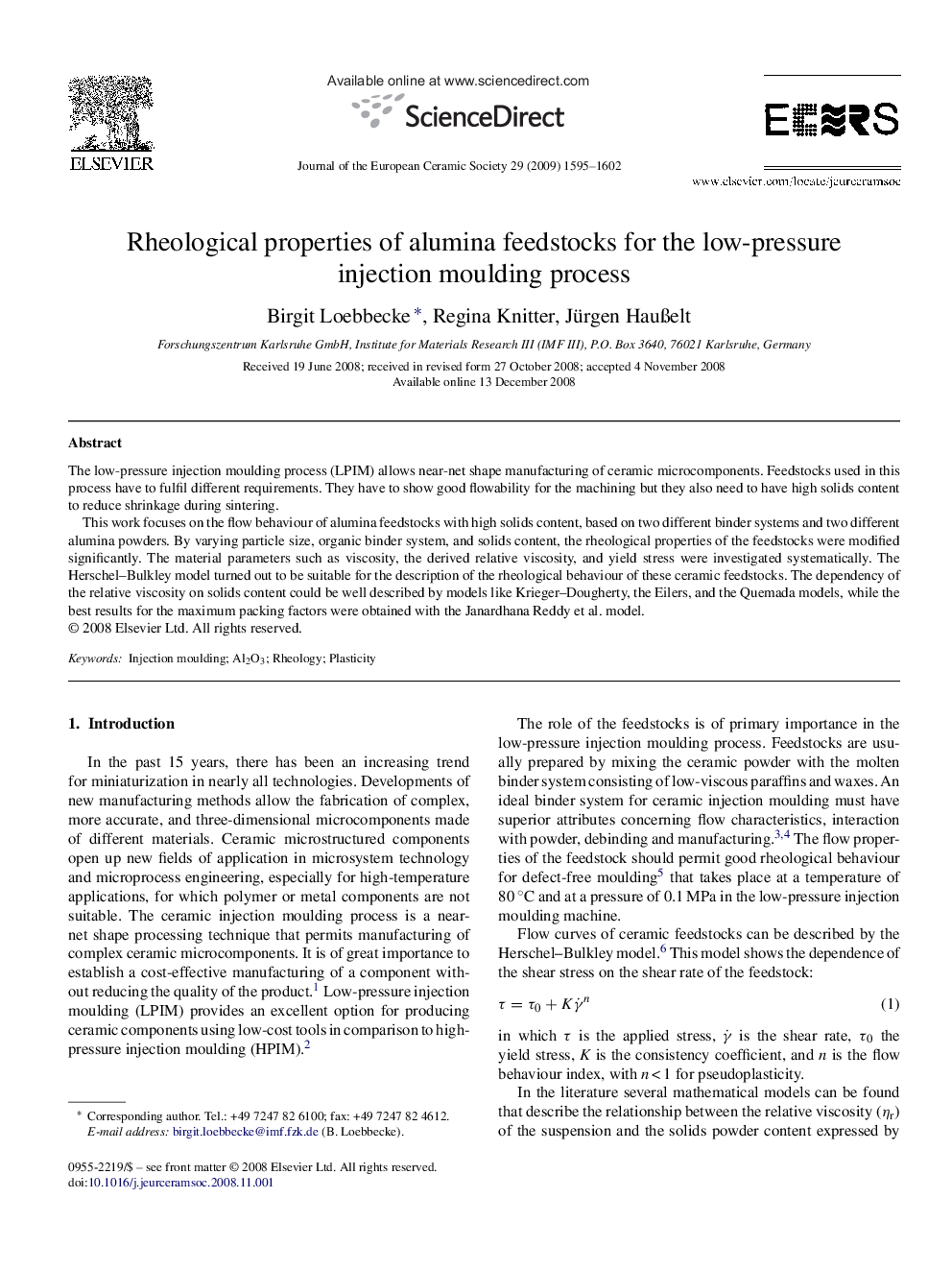| Article ID | Journal | Published Year | Pages | File Type |
|---|---|---|---|---|
| 1476764 | Journal of the European Ceramic Society | 2009 | 8 Pages |
The low-pressure injection moulding process (LPIM) allows near-net shape manufacturing of ceramic microcomponents. Feedstocks used in this process have to fulfil different requirements. They have to show good flowability for the machining but they also need to have high solids content to reduce shrinkage during sintering.This work focuses on the flow behaviour of alumina feedstocks with high solids content, based on two different binder systems and two different alumina powders. By varying particle size, organic binder system, and solids content, the rheological properties of the feedstocks were modified significantly. The material parameters such as viscosity, the derived relative viscosity, and yield stress were investigated systematically. The Herschel–Bulkley model turned out to be suitable for the description of the rheological behaviour of these ceramic feedstocks. The dependency of the relative viscosity on solids content could be well described by models like Krieger–Dougherty, the Eilers, and the Quemada models, while the best results for the maximum packing factors were obtained with the Janardhana Reddy et al. model.
